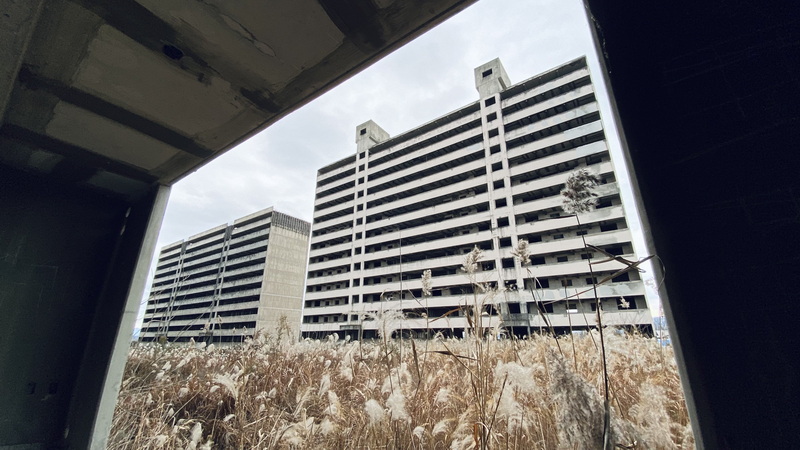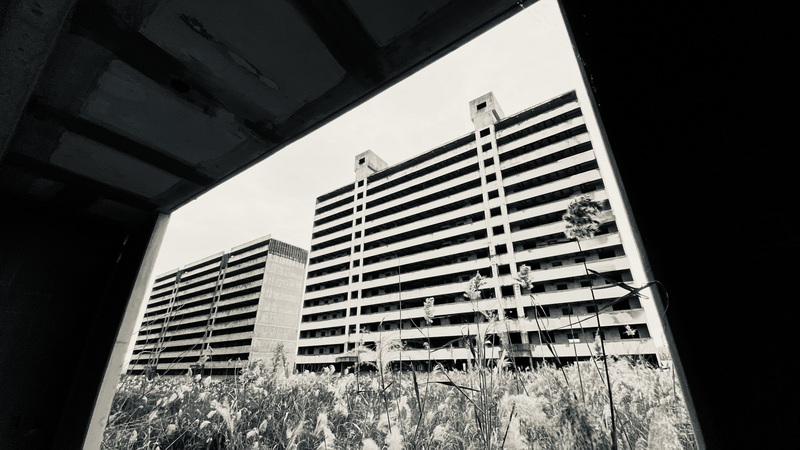Casualties of the “Crust Belt”
By Isaiah Winters
To kick off the new year, we’ll unshelve our trusty Farmers’ Almanac and put its sage guidance and folksy humor to good use in the pursuit of understanding Korea’s modern agricultural craze: sowing apartment complexes in the middle of nowhere. What could possibly go wrong? So, without further ado, let’s hop in the car and head to the countryside – oh, and feel free to ask any questions along the way…….
Ahh, rural Honam. See over there? If you squint intently at the horizon, you may just spot a half-dozen husks of concrete sprouting from the plain’s vast and fertile apartment paddies.
“Oh, I do see those. That didn’t take long!”
Right. As their prevalence suggests, apartments are the cash crop of choice nowadays, as they more efficiently feed a growing and ever-hungrier economy. However, it’s not all fun and games for apartment farmers. Sometimes they suffer from financial droughts, development depletion, or just have a bad yield. This makes the economy sad, prompting it to move on to greener pastures.

“But what happens to the failed apartment crop – is it simply abandoned to rot in the fields?”
Sadly, yes. Those barren apartment stalks in the distance have been rotting in those fields for 20 years. It takes a long time for them to fully degrade, and the locals, none of whom are apartment farmers themselves, can’t do much about it. They simply have to live with their community’s newfound apartment blight. That’s the price they pay to live in the shadow of our modern economy. To be fair, the modern economy is indeed amazing, making life better in almost countless ways – but it’s also prone to sudden bouts of absence, depression, and even blind rage.
“Well, can the locals petition the farmers to continue sowing those fields or perhaps even restore them to their natural form?”
For the most part, no. Usually, only apartment farmers can influence the behavior of other apartment farmers, or if the economy and its buddies get involved, things can change that way, too. Individual apartment consumers themselves aren’t very powerful, unfortunately. When a crop fails, they’re just expected to suck it up and be grateful that the farmers tried to cultivate anything in their communities at all. In that respect, the crumbling apartments and fallow fields are almost like trophies to what could have been. It’s a unique part of the new economic landscape, what experts today call casualties of the “Crust Belt.”

“In that case, are any apartment farmers at least trying to replant those fields somehow?”
That’s a good question. There actually is one article online about this apartment farm’s current status. It appears that now, on the twentieth anniversary of the crop’s failure, a certain Mr. Kim has successfully petitioned the local government for a change in the housing business plan, that way cultivation can resume. The problem is that the apartments have rotted so much that the local government believes a building safety diagnosis must be conducted before any new soil is tilled.
“Wow, apartment farming is a lot more complicated than I expected!”
Indeed. And get this – recent legal changes have allowed local government officials to condemn and plow up fields of rotting apartments if they’re deemed a high enough risk for accidents, so we’ll have to see what their safety inspection yields before we know what will happen next. That alone will probably be a long, drawn-out process. But even if the crops aren’t uprooted by government decree, then newcomer Kim will have to begin the next task: settling the ongoing lien disputes associated with the farm.
“Oh, dear. There are messy, 20-year-old lien disputes to plow through, too?”

Yeah. In fact, if you visit the farm and see the rotting apartment stalks up close, you’ll notice giant “lien graffiti” messages spraypainted everywhere, and they don’t say nice things about the previous farmer. They even include his name and phone number in giant letters that everyone in the local community can read. From time to time, the previous farmer will come and paint over the graffiti to protect his identity, but then someone else comes along and repaints the messages. It’s like an online message board argument that scrolls on and on, only it’s the size of an apartment. It really adds a splash of color to the otherwise blighted surroundings.
“Well, if nothing comes of this entire effort to replant the land, can the locals at least use it for something so that it’s not a complete waste?”
Not really. Some locals might sow a little tract or two as a secret hobby farm, but if the apartment farmers find out, they might get angry. That’s probably why they kept that giant construction crane on site – it’s like a big scarecrow that wards off potential newcomers to the area. The birds sure are happy to make nests in the area, however, and the local flora are having a field day growing in peace – especially reeds, which have beautiful plumes this time of year. Oh, yeah, and the apartment rot makes for very bleak photoshoots that loner photographers can enjoy, too.
“Then I guess that’s better than nothing.”
Yes, I agree. Hey, look! There’s another one…….
As per usual, readers, if you’re interested in this sort of topic and want to see more, head over to the Lost in Honam YouTube channel for the video version of this and prior articles.
The Author
Born and raised in Chino, California, Isaiah Winters is a pixel-stained wretch who loves writing about Gwangju and Honam, warts and all. You can see some of his unique finds on Instagram @d.p.r.kwangju and YouTube at Lost in Honam.





